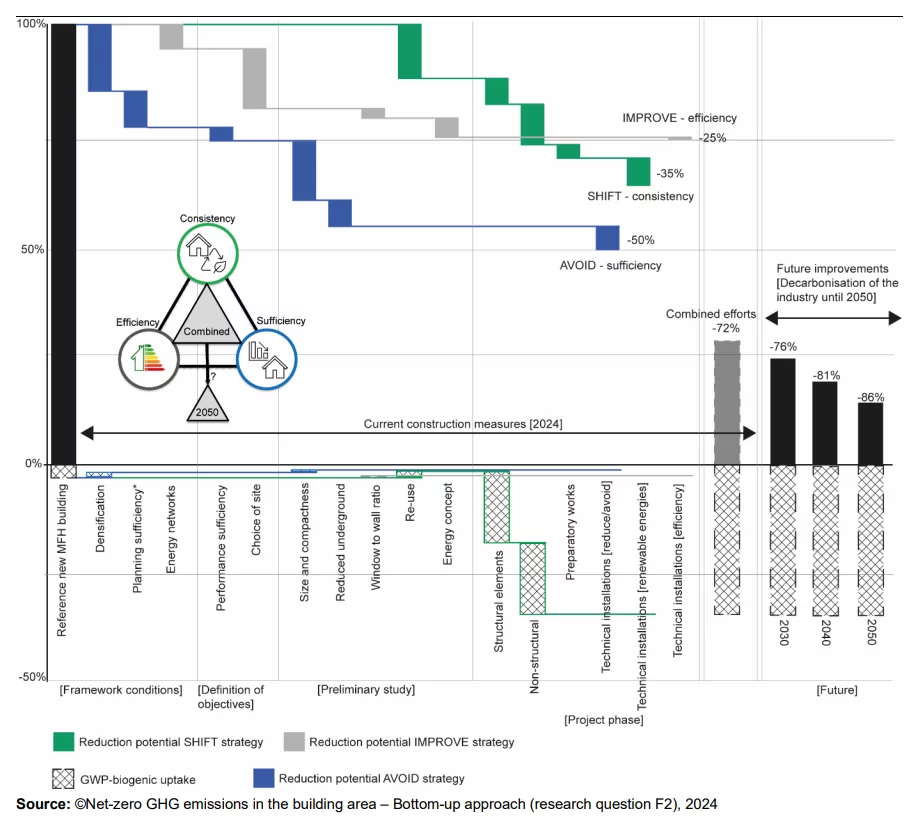The building sector, responsible for 40% of global greenhouse gas emissions, faces a critical challenge in achieving climate neutrality by 2050. Despite efforts, progress towards carbon-neutral construction has been slow. To address this challenge, the Swiss Federal Office of Energy mandated the “Net-zero GHG emissions in the building area” project in 2023. Lot F2, focusing on a bottom-up view, aims to define net-zero GHG strategies, establish benchmarks, and guide stakeholders towards sustainable practices at building scale. The project objectives include identifying measures to reduce emissions from construction and operation at building scale, formulating strategies for achieving net-zero by 2050, assessing these strategies from a social, economic, and technical point of view, and classifying building standards in relation to net-zero targets. Measures for GHG reduction are categorized based on technical and non-technical aspects. A systematic approach, including a literature review, logical grouping, and data collection, was employed to identify these measures. Existing recommendations from SIA, EnDK, Minergie, and scientific literature were reviewed to have a complete list of measures available. Results throughout the report are based on a life cycle assessment approach, using the EN 15978 and SIA 2032 standards, with GWP100 as the primary indicator. The chosen impact assessment method aligns with IPCC 2013, focusing on climate change. Building elements are categorized using the eBKP-H/eCCC-Bât structure. The strategies for net-zero individual buildings are grouped into three categories: AVOID (reduce size and materials), SHIFT (move to low-carbon materials and renewable energy) and IMPROVE (enhance existing practices). These strategies are assessed for technical, economic, and social feasibility. In conclusion, the report aims to guide net-zero construction practices by providing insights into technical and non-technical measures, strategies, and building standards. It emphasizes the need for immediate action in the building sector to meet critical climate thresholds and contribute to a sustainable, low-carbon future.
See also the project report:
Priore, D. Y., Habert, G., Jusselme, T., Zwicky, D., Cau, A. S., Lasvaux, S., Frossard, M., Favre, D., Zhang, X. (2024). Net-zero GHG emissions in the building area Bottom-up approach (research question F2). Swiss Federal Office of Energy SFOE

